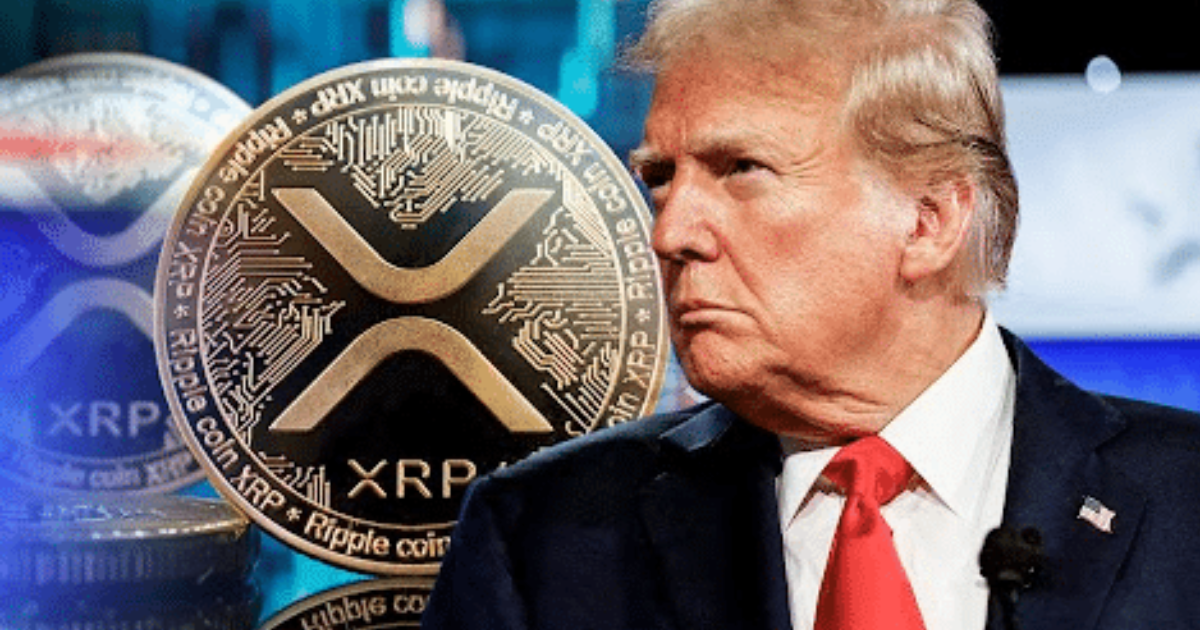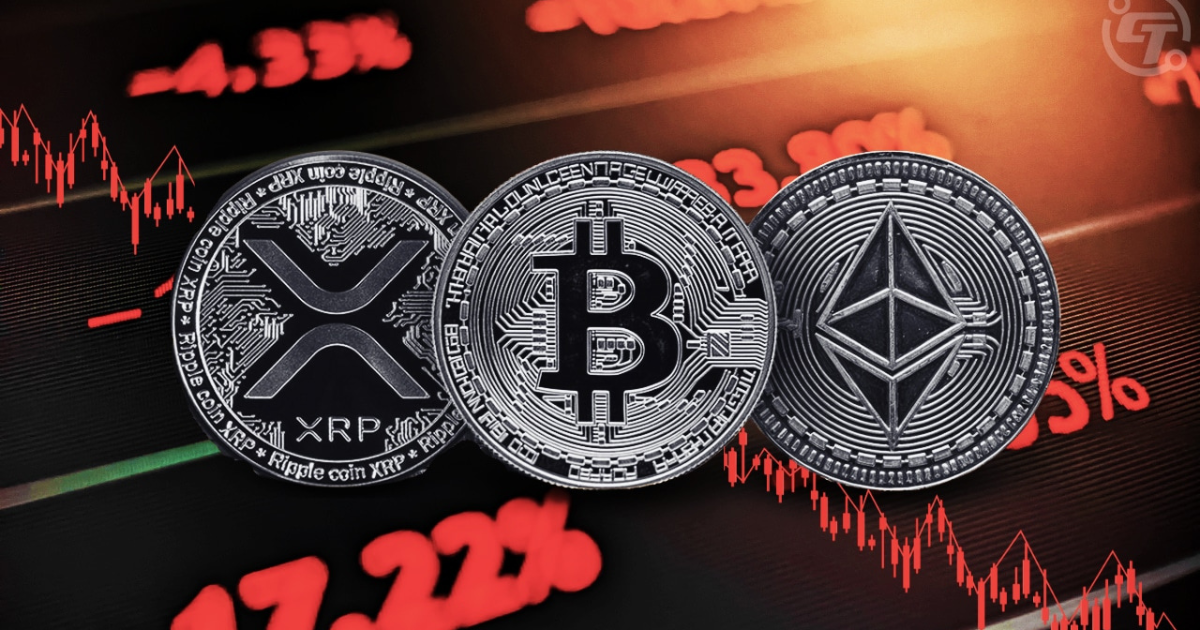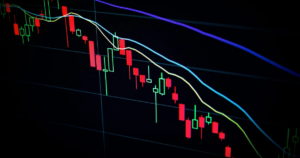The rising concerns about XRP tariff come from the conflicts with regulatory uncertainty and President Trump’s new baseline import duties. Since Sunday the digital asset has collapsed by 14 percent.
XRP is well known for its cross-border payment solutions, one of which is that it is subject to global market reaction to the imminent implementation of broad 10% tariffs on April 5th.
Key-Takeaways:
- New import tariffs and regulatory uncertainty have seen XRP fall 14% and the cross-border payment model they have for their XRP appears somewhat exposed to global trade disruptions.
- Ongoing trade tensions and market volatility could keep pressure on its performance, though its case in the SEC’s lawsuit could help some react to these tariff pressures.
XRP Tariff Vulnerability Increases Due to Global Trade War
 The XRP tariff situation is a macro problem within cryptocurrency markets as more and more nations get ready to retaliate against US trade policies with countermeasures. And China, the European Union and Japan reportedly would draw up countermeasures that would compound further market instability.
The XRP tariff situation is a macro problem within cryptocurrency markets as more and more nations get ready to retaliate against US trade policies with countermeasures. And China, the European Union and Japan reportedly would draw up countermeasures that would compound further market instability.
It has triggered a risk-off sentiment that disproportionately affects digital assets such as XRP because this trade conflict is getting so out of hand. Another challenge facing the cryptocurrency is its unpredictable and volatile environment, which already put it in an unusual spot under SEC uncertainty.
XRP has taken a tumble since January 31, falling 39%, and it has been more entrenched in the low since Trump’s administration failed to include it in the list of Strategic Reserve Assets. Analysts say that Ripple’s international payment focus is exposed to the issues of tariffs with XRP.
Currency was down 10.38 percent at $1.9217 on Sunday and saw its value underperform a broader cryptocurrency market that decreased 6.88 percent.
SEC Meeting Looms Large for XRP Tariff Recovery Potential
 XRP tariff concerns are what is dominating the market at the moment, however, Thursday’s closed SEC meeting on 10th April could be a turning point. The regulatory body has remained silent about the possibility of taking its appeal against the “Programmatic Sales of XRP” ruling.
XRP tariff concerns are what is dominating the market at the moment, however, Thursday’s closed SEC meeting on 10th April could be a turning point. The regulatory body has remained silent about the possibility of taking its appeal against the “Programmatic Sales of XRP” ruling.
It’s especially curious following comments by Ripple CEO Brad Garlinghouse that the SEC was going to withdraw its appeal. That outcome could have a huge bearing on XRP’s future regulatory path.
Acting Chair Mark Uyeda, the head of the Crypto Task Force, and Hester Peirce, Commissioner, have a chance to vote on whether to allow Ripple to appeal the decision. A Republican majority of 2-1 with an incline to get out of the non-fraud cases makes withdrawal a possibility.
Despite that, the SEC’s silence on the issue during the past three weeks stands in sharp contrast to the order that came down just one week after the company’s CEO announced it in the Coinbase case. As this has extended, it raises questions about the agency position on the matter.
Winning an SEC decision will increase some of the resistance to the XRP tariff challenges, allowing the start of a U.S. XRP spot ETF market, something that could boost institutional adoption. This is one of the few places where there is a positive macroeconomic environment.
Yen Carry Trade Unwinding Adds to XRP Tariff Strain
 As currency markets stress, things get more complicated for the XRP tariff situation. The USD/JPY dropped below 145 while Bitcoin dipped below $80,000 for the first time since March 11th, taking the cues from the Yen carry trade unwind.
As currency markets stress, things get more complicated for the XRP tariff situation. The USD/JPY dropped below 145 while Bitcoin dipped below $80,000 for the first time since March 11th, taking the cues from the Yen carry trade unwind.
It mimics the price action in August 2024 when Bitcoin saw post-Bank of Japan volatility and crumbled 8.85%.
The fall of USD/JPY to 145.108 in the present day is its cheapest level since the final carry trade unwind then. The demand for Japanese Yen increased while the sell-offs prevented the rest of the risk assets.
XRP is especially vulnerable to these macroeconomic shifts since it’s tariff exposed, and as it tends to affect cross border payment solutions more (as a known fact when it comes to international trade tensions).
However, the road XRP will take, moving forward, will likely be decided by XRP tariff developments, as markets work through the details of what is expected to show up on Wednesday regarding U.S. tariffs. Several catalysts are outlined by experts that could shift the sentiment towards Bitcoin including:
- The possibility of XRP going back to its highest level of $3.5505 may have to do with appeal withdrawal, or resolution of ripple’s cross appeal, or settlement.
- It could increase interest from the institutional side and offset some of the XRP tariff questions.
- XRP might be pressured to $1.7938, as the worsening trade tensions, the already elevated U.S. price inflation data (scheduled for release on April 10), or hawkish Federal Reserve guidance can do.
- A positive attitude can be improved across the sector if the sector could receive legislative support for cryptocurrency at the federal level.
Conclusion
With a multi-faced crisis on their hands, XRP tariff is among the many issues faced. Now key events this week include the SEC meeting and inflation data that will set the tone for investors going at a crossroads. XRP’s use in international payments and regulatory uncertainty makes it especially sensitive to on-going trade disruptions










